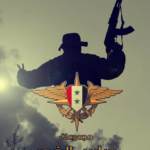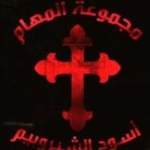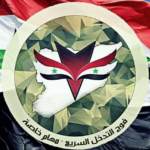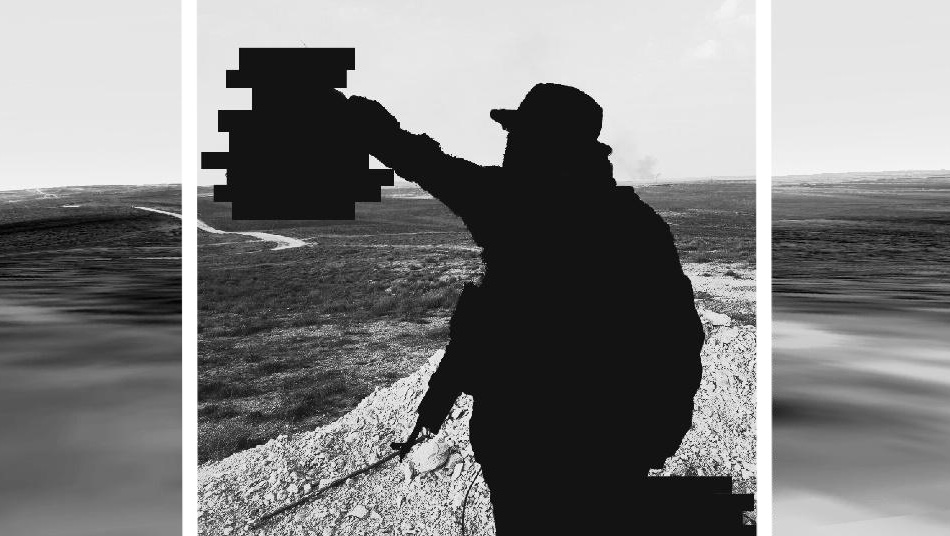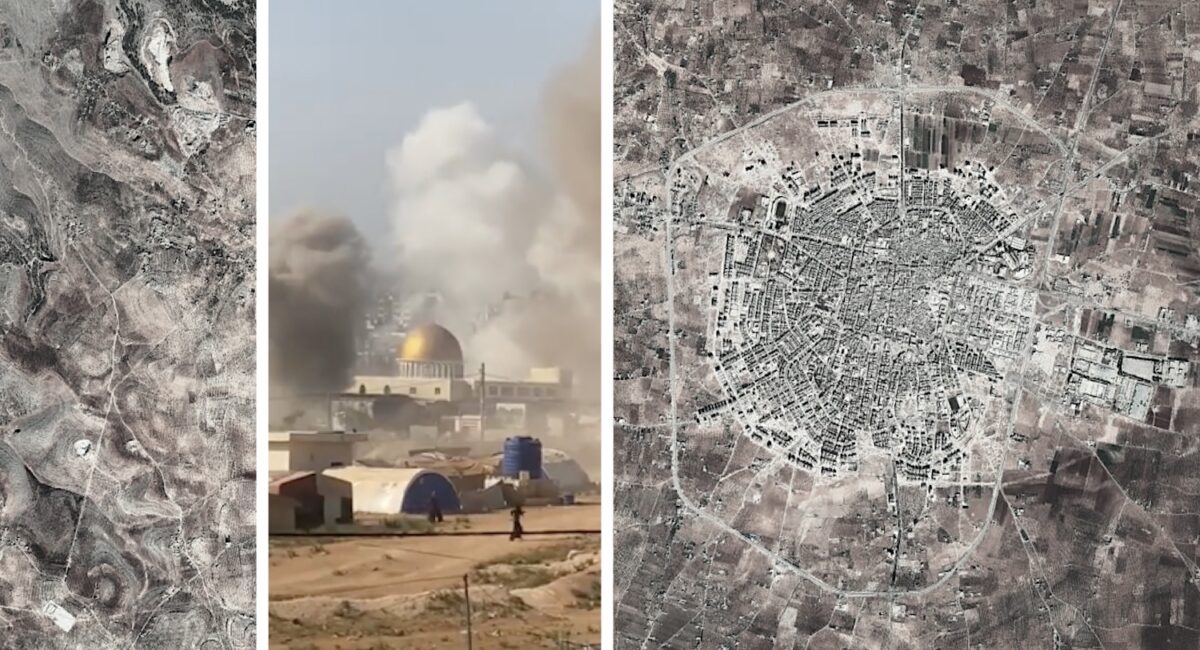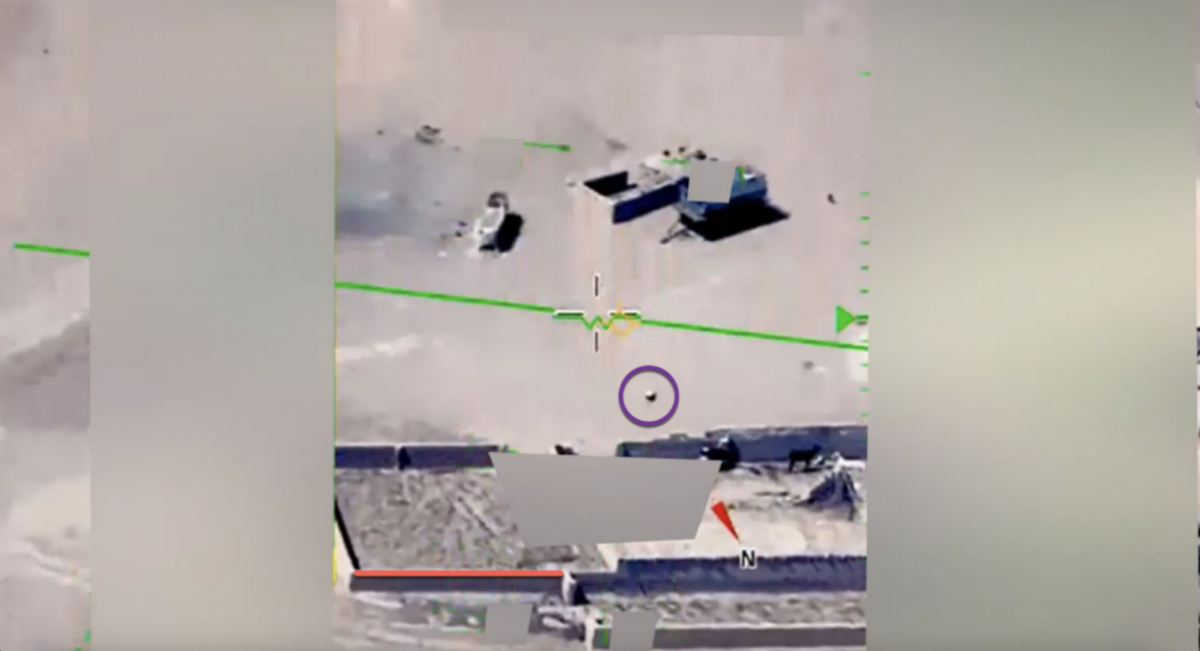In This Sign They Will Conquer? - Christian Militias in the Syrian Conflict
Although estimates vary to some extent, Syria is said to have been the home of close to two million Christians – accounting for around 8-10% of its pre-war population. Close to a dozen different denominations could be found in the country which many observers from outside generally considered to be very close to the Baathist government. The start of the popular uprisings across the Arab world in 2011 and even more so the arising full-scale war in Syria forced these Christians to make a decision which side to stand on (and to fight for). While 300,000-500,000 Christians have already left Syria since 2011, numerically they still are a substantial factor in Syria during wartime if one considers that approximately another 4,5 million Syrians have fled their country.
Over the course of the Syrian conflict militias became increasingly important for both the opposition and the Syrian government and its armed forces. Aron Lund, fellow with The Century Foundation think tank, described the Syrian warfare as a “militiafication” of a conflict. Some of these groups that have evolved during the conflict consist almost entirely of Christians or at least receive strong backing from parts of the Christian minority in Syria/
The following list is an overview of the Christian militias that have been active over a longer period of time during the Syrian war and are not restricted to service in a specific town alone. Groups which could be considered more of a neighbourhood watch are thus not featured in this Bellingcat article.
List of Christian Militias:
Militias affiliated with the Syrian Democratic Forces (SDF):
- Syriac Military Council (MFS)
- Bethnahrin Women’s Protection Forces (HSNB)
- Syriac Security Office (Sutoro)
- Khabour Guards
- Nattoreh
Militias affiliated with the Assad-led Syrian government:
- Nusur az-Zawba’a
- Gozarto Protection Force (Sootoro)
- Hurras al-Fajr
- Quwat al-Ghadab
Militias affiliated with the SDF
Syriac Military Council (MFS)
Founded: January 2013
Part of: SDF since January 8, 2014 (founding member), military wing of the Syriac Union Party (SUP)
Based in: Hasakah Governorate
Deployments: multiple campaigns in the governorates of Hasakah, Aleppo (e.g. Tishrin Dam, Manbij), Raqqa (Tabqa, Raqqa City), and Iraq (Sinjar mountains in Iraq during the YPG’s campaign to free Yezidi refugees)
Size: >2000 fighters (as of March 2015)
The Syriac Military Council (MFS, which is derived from the group’s Syriac name Mawtbo Fulhoyo Suryoyo) is probably one of the most wide-known Christian militias, mainly due to the group’s participation in the Battle for Raqqa. As a part of the SDF, it is directly involved in frontline fighting.
In the course of the intensifying conflict in Syria and tensions flaring between the Kurdish factions and the Syrian government led by President Bashar al-Assad since the summer of 2012, the Syrian Arab Army (SAA) abandoned many of its footholds in the northern parts of the country. During this transition phase the MFS emerged as the armed wing of the Syriac Union Party. Its official goal is to protect the Christian minority from harm whereas it stands hostile to what they call “the despotic Ba’athist regime” under President Assad. As the MFS could not prevail its goals without the support of the much more powerful YPG militia, a collaboration was the obvious outcome which even resulted in a merger: the Syrian Democratic Forces (SDF). Although the MFS was present, amongst others, during the battles around Ras al-Ayn, Hasakah city, the Tishrin Dam and Shaddadeh, only very few photos show corpses or actual fighting which leads to the assumption that the MFS was mostly deployed in the hinterland.
This changed completely with the beginning of the Battle of Raqqa which started in early June 2017. The MFS has also been sent to fight there and contrary to the battles mentioned before, there is no doubt that its militiamen stand in the line of fire, although their numbers might not exceed 40 fighters. Three of them are western volunteers, from the United States (U.S.) and the United Kingdom (UK) respectively.
The Battle of Raqqa has been accompanied by a massive increase in activity on the MFS’ Twitter account. In the three years of its existence since November 2014, the account sent close to 600 tweets (as of early September, retweets and replies excluded). However, approximately a third of those tweets were posted since June 2017. This highlights the increase in efforts put into public relations work and communicating its agenda.
Statistics about latest increase of PR traffic:
– @syriacmfs: joined Nov 2014, 583 tweets, 221 were tweeted in the last 7 months
— Shell Shocked (@shell_blog) July 14, 2017
Moreover, not just the area of deployment evolved but also the composition of the militia. At least since the spring of 2017, western foreigners fight within MFS ranks. While foreign fighters are not a new phenomenon to the SDF, they used to be included in YPG units. Kevin Howard, an American from California, and Macer Gifford, a Briton, appear to be the first to have joined the MFS. This may have generated attention among western media outlets for the cause the MFS is fighting for and the militia as a whole. Especially Howard, easily recognizable by his blond hair and his extensive tattoos, has been featured numerous times in MFS media releases ever since he gave a first statement in an official MFS video on June 18th 2017. He himself had previously switched from the YPG to the MFS in spring 2017, because he “identified more with the MFS core beliefs and their sense of freedom” as he stated in an interview with the author of this text.
Earlier this year, footage emerged showing a burial ceremony of fallen MFS fighters. It has to be noted that these pictures prove that the Syriac Military Council is not an exclusively Christian unit. Two tombs seen on the pictures are decorated with a crescent instead of a cross, suggesting the respective fighter was Muslim, and at least one mourning relative can be seen wearing a hijab.
5-This gave rise to several allegations against the #MFS of being sectarian and a Christians-only militia. But let’s look at the pics again. pic.twitter.com/3DfHH1Smnj
— Shell Shocked (@shell_blog) March 10, 2017
It is highly important to be aware that the MFS is not solely a fighting unit. In fact, its value rather lies in the political agenda than in military force. Kino Gabriel, the MFS spokesperson, said that the Assyrian/Syriac unit serves as a link between Kurds and Arabs. Given the fact that Raqqa is a city which has a majority of Arab residents (as some other towns and regions the MFS was deployed to), the presence of the MFS might be a part of an effort to prevent the residents from feeling like they were occupied by a Kurdish force in the course of liberation from the so-called Islamic State (IS).
In a recent and dramatic turn of events, Kevin Howard and another US volunteer fighting in the ranks of MFS were detained by members of the SDF at the beginning of October 2017. When this article was finished, there was no news regarding the whereabouts of Howard whereas his comrade had been released in the meantime. For further information see this twitter thread.
THREAD
You may have noticed the medial absence of Kevin Howard, 1 of 3 western fighters with #SDF‘s mainly Christian #MFS, during last days pic.twitter.com/jJPrAnP1Sa
— Shell Shocked (@shell_blog) October 11, 2017
Bethnahrin Women’s Protection Forces (HSNB)
Founded: August 2015
Part of: MFS and thus SDF, military wing of the Syriac Union Party (SUP)
Based in: Hasakah Governorate, particularly in Malikiyah
Deployments: limited, some campaigns in Hasakah Governorate, Raqqa Governorate (Raqqa City)
Size: likely >100 fighters, most estimates include female HSNB fighters in the numbers of the MFS without further distinction
The Bethnahrin Women’s Protection Forces (HSNB, Haylawotho d’Sutoro d’Neshe d’Beth Nahrin in Assyrian/Syriac) is unit composed of women fighting for the MFS. It could, thus, be considered that the HSNB is to the MFS what the YPJ is to the YPG. However, the HSNB has been much less active on the frontlines than its YPJ counterpart. In general it shares the same ideology with the MFS, being oriented towards the Dawronoye movement which combines a strong Christian/Syriac/Assyrian identity with some quite progressive views for example on women’s rights.
Just like the MFS, both HSNB’s online and field presence has increased during the last months.
– @HSNB_: joined Sept 2016, 91 tweets, 57 were tweeted in the last 6 weeks (!)
Not only did they increase their pace, quality improved
— Shell Shocked (@shell_blog) July 14, 2017
Some of their fighters were in fact present during the operations around Shaddadi, but it remains unclear to what extent they were involved in the fighting.
The unit is also present in Raqqa during the recent battles against IS. However, the contingent reportedly only consists of four fighters and can be considered a symbolic contribution.
The image which is being created on the official HSNB social network pages indicates that the women, apart from their deployment to Raqqa, primarily work as a police and security force manning checkpoints and securing churches during mass. Therefore it has a close, demonstrative working relationship with the fellow Christian Sutoro militia which is repeatedly highlighted in postings on Facebook and Twitter.
Having said this, the HSNB’s strengths are not those of a trained-for-battle frontline unit. Rather they should be regarded both as a police unit relieving some pressure from the MFS units which are now repeatedly needed at the front and as a political statement underlining the progressive stance towards women in a role bearing arms and taking care of the society’s security in general.
Sutoro / Syriac Security Office
Founded: (officially) February 2013 in Qamishli, but presence started earlier around 2011
Part of: Security force of the Syriac Union Party (SUP)
Based in: Hasakah Governorate, mainly Qahtaniyah, Malikiyah and Qamishli
Deployments: normally none, with few exceptions
Size: >1000 fighters (as of mid-2013)
The Syriac Security Office, more commonly called Sutoro, makes no secret of its official key task as the logo has the word “Police” openly written on it. Originally, it was composed of several loose units to protect Christians from Islamist assaults in small towns of Qahtaniyah and Malikiyah in northeast Syria. The Kurdish forces at that time had a very close eye on these new militias and even disarmed them for some time to make them join the Kurdish dominated formations. In early 2013 another branch was founded in Qamishli although the Sutoro had already been present in the city since 2012 (for more information see the part on the Sootoro/GPF below in this article). The Sutoro has been loyal to the aforementioned SUP and is therefore closely linked with the MFS and the HSNB both in political and military issues.
Loyalty though has been questioned in the group and even lead to a split and the forming of a new militia in Qamishli which is loyal to the Assad government. This new militia will also be discussed in this overview.
Since the split, the Sutoro established itself as a unit which is trained by the YPG and works side by side with the Asayish, the police force of the autonomous cantons of the Syrian Kurds. Interestingly, the Sutoro does not seem to have different units for men and women – both are allowed to serve in its ranks.
Although the Sutoro is officially subordinate to Asayish, its affairs are only superficially managed by the Kurdish police forces. Both Christian and Kurdish units are eager not to interfere with each other in a way that could affect their close relation. Generally spoken, the Sutoro sticks to securing inner cities and supply lines to the front.
Somewhat contrary to what the Sutoro’s logo is showing, members have recently seen limited action during the Raqqa campaign, martyr posters and commemoration posts in social networks suggest. The Sutoro has been largely unaffected by the war when it comes to casualties, having its first fighter killed in action in early February 2015.
Khabour Guards
Founded: April 2012
Part of: SDF (since February 2017)
Based in: Hasakah Governorate (Khabour valley)
Deployments: Raqqa City
Size: unclear, allegedly several hundred
The Khabour Guards were, like most Christian militias, originally founded to protect fellow Christians from threats of Islamist forces or armed gangs in general. As their name suggests, the Khabour Guards initially sought to secure the Khabour valley, an area along the Khabour River, which is home to a considerable Christian population with Tel Tamer probably being the most widely known location. Their main intend is to guard the Khabour valley from Islamist infiltration and ensure public security, thereby acting similarly to Sutoro and Sootoro/GPF. Unlike MFS, HSNB and Sutoro, the Khabour Guards, along with the Nattoreh, are not affiliated with the SUP but with another Christian party called the Assyrian Democratic Party which is not as hostile towards the Assad-led government as the SUP is.
In May 2014, IS attacked Tel Tamer resulting in the Khabour Guards tightening its relation with the YPG to get help defending the town. Nevertheless, IS managed to capture Tel Tamer and dozens of surrounding villages in between February and March 2015. Especially the abduction of hundreds of local Christians, and the release of large parts of the group only days later, attracted worldwide attention (the last 42 hostages could be freed during the battle of Shaddadeh in February 2016). However, Khabour Guards with the help of MFS and YPG managed to consolidate the frontline and eventually recaptured the area in May 2015. The latter gained considerable influence on security measures over the following years although (or because) the Khabour Guards did not become an official member of the SDF until an agreement was reached in early 2017. As a result, the YPG refrained from having a (strong) presence in the Khabour valley and the Guards again assumed responsibility for security measures in the region.
Moreover, the Khabour Guards joined the SDF in the course of the deal and even sent a small group of fighters to join the battle of Raqqa just a few months later at the end of July 2017.
Nattoreh
Founded: not later than November 2014
Part of: SDF (since February 2017)
Based in: Hasakah Governorate (Tel Tamer)
Deployments: Shaddadeh
Size: unclear, probably less than Khabour Guards
The Nattoreh (Syriac for ‘Protectors’) share their ideological roots as well as their ethnical and religious background with the Khabour Guards. Both units are directly linked to the Assyrian Democratic Party. For that reason, the groups are closely linked with each other.
Nattoreh’s leader Robert Ichou has spoken out vociferously against Turkey in an April 2017 interview. Contrary to the Guards, the Nattoreh are almost exclusively limited to duty inside Tel Tamer where they guard churches and streets, and man checkpoints. These tasks are also fulfilled by women though they are rarely pictured holding weapons.
Most notably, the Nattoreh do not try to create an image of them being a fighting formation at the frontlines against Islamist forces. Especially early pictures include very few images of training and generally lack any open sign of loyalty to a certain group they could align with besides the Christian minority itself. However, just a few weeks after the Nattoreh had joined the SDF together with the Khabour Guards, a picture was posted on Facebook displaying a fighter holding a flag of the Kurdish-led coalition. This can be considered a first sign of connection between the militia and the coalition.
Just like the Khabour Guards, the Nattoreh also deployed groups of fighters to towns or regions other than those they are based in, though on an even smaller scale. Nattoreh fighters joined in to recapture the town of ash-Shaddadeh in February 2016.
The initial contribution to the battle is hard to verify, though there are no indications for that the Nattoreh engaged in the fighting in the first line of fire – just like MFS’ early operations. All in all, the Nattoreh did not deploy much more than a dozen fighters, if any at all. Just recently, the group made public that Nattoreh members were also sent to man a checkpoint along the road between Abu Fas and Deir ez-Zor, yet again to provide only a modest number of fighters.
Christian #Nattoreh militia of Tell Tamer with a rare deployment: securing the road between Abu Fas and #Deir_Ezzor pic.twitter.com/nnKv6MFyJQ
— Shell Shocked (@shell_blog) September 26, 2017
The fact that the Nattoreh – unlike MFS, HSNB and Khabour Guards formations – have not been told or decided to send its fighters to Raqqa city speaks for itself and underlines that the Nattoreh apparently are still considered a militia with even stronger local limitations than the Khabour Guards and therefore with less political use to the SDF.
Militias affiliated with the Assad-led Government
Nusur az-Zawba’a
Founded: before January 2014
Part of: Syrian government forces, close ties to other militias fighting on loyalist side
Based in: Damascus, Beirut
Deployments: Governorates of Homs (Homs City, Mahin, Tadmur/Palmyra, al-Qaryatayn), Latakia (Kessab), Rif Dimashq (Qalamoun region), Daraa, Hama (Morek), Suwayda (Tha’lah Military Airbase, countryside) Raqqa (failed Tabqa offensive)
Size: 6,000-8,000 (as of September 2015 / March 2016)
Nusur az-Zawba’a (Arabic for “Eagles of the Hurricane/Whirlwind”) may be the most influential militia with a strong Christian background in the Syrian war, as discussed before by the author on this blog. The Nusur are a sub-organization of the Syrian Social Nationalist Party (SSNP) and therefore rely much more on their ties to the party than to a specific religious background. However, due to its goals and its programme, the party is inordinately popular among non-Syriac Christians.
SSNP’s roots go back until 1932 when it was founded by the Lebanese Christian Antoun Saadeh in Beirut – where its main headquarters are still located. The SSNP’s ideological groundwork is the rejection of Pan-Arabism, ironically the very ideology which is the Baath-Party’s basis. Instead, it emphasizes the forming of a Utopia called ‘Greater Syria’, a region astonishingly equal to the maximum spreading of the Neo-Assyrian empire. The SSNP is highly attractive to Christian Arabs, because it originally rejects the idea of a nation being defined by a language or a religion: “by bridging the historic gap between Muslims and Christians, Pan-Syrianism promised full citizenship and equality for the latter; by glorifying pre-Islamic antiquity – the civilization that Islam vanquished – it celebrated the common past; and it offered a state that would include nearly all Orthodox Christians within its confines.” A more detailed history of the SSNP and its ideology can be accessed here.
The militia itself evolved from the ranks of the NDF and can be considered a tool to enforce recruitment among those Syrians who are feeling some kind of ‘estrangement’ with regard to Baath ideology and Pan-Arabism. A map of Greater Syria and often a picture of Antoun Saadeh – usually accompanied by a picture of Assad – at almost every SSNP bureau is a clear indication for this.
It is difficult to estimate the military power of the Nusur az-Zawba’a. The SSNP as a party is said to have around 100,000 members in Syria, the militia might have as much as 6,000–8,000 men in its ranks in Syria.
Appointing a certain point in time at which the SSNP began fighting with an own unit is not conceivable. Two early photos from November 2013 show what looks like members of the SSNP having the party’s flag attached to their backpacks.
Another picture of an armed SSNP member came online as early as in January 2014, showing a man on a technical bearing the hurricane-logo on his uniform. This seems to be one of the earliest – if not the first – visual confirmation for the use of the term “Nusur az-Zawba’a” (written on the windshield).
At the end of the same month, the burial of a fallen SSNP fighter was made public. Typically enough, he was a Christian. However, it is not entirely clear if these men at this point had already served with a solely Social Nationalist unit or as soldiers of the SAA or NDF.
Shortly thereafter, Nusur az-Zawba’a consolidated and made appearances in Latakia governorate (April 2014, January 2016, June-August 2016), Damascus (April/May 2014), Morek/Hama (November 2014, April 2015), Daraa governorate (February 2015), Idlib governorate (March 2015), Tha’lah Military Airbase/ Suwayda (June 2015), Zabadani/Rif Dimashq (July-September 2015), Tadmur and al-Qaryatayn/Homs (March/April 2016). A photo posted on Facebook also suggests that Nusur’s fighters also participated in the Syrian government’s failed Tabqah/Raqqa offensive of June 2016.
It’s telling enough that this fighter’s profile states that he is originally from Baalbek in Lebanon. This highlights the connections and regional ties between both the SSNP branches in Lebanon and Syria. Lately, the militia has been especially active in Hama governorate as well as in the inter-Syrian border region between the governorates of Suwayda and Rif Dimashq. All of the regions mentioned above are home to a considerable Christian or Druze population, except for Tabqa, Tadmur, and Daraa.
Interestingly, the party also remains closely tied to its Lebanese branch regarding administration, the Lebanese ward being obviously responsible for the public relations and propaganda issues.
Though fighting in #Syria, #SSNP‘s “Nusur az-Zawbaa”-militia’s propaganda center seems to be in #Lebanon (code:+961) pic.twitter.com/tycxzU6V26
— Shell Shocked (@shell_blog) August 23, 2016
It may well be that the latest efforts to internationalise Nusur’s public appearance on the internet were pushed forward by the Lebanese SSNP branch. The output from the latter’s Twitter account has been in English only since June 2017.
On the one hand, the Nusur az-Zawba’a can be considered a local militia with a special focus on fighting at locations many members in its ranks have a religious or ethnic relation to.
On the other hand, Nusur az-Zawba’a are a militia with ties not just inside Syria, but also within at least one neighbouring country (up to now, there are no indications according to which the very small SSNP branch in Jordan is involved in the war as well). This makes the Nusur a group relying on both national and regional ties, showing parallels to Hezbollah, for example. The interaction of places of action and the composition of its ranks makes the Nusur az-Zawba’a militia a product of the Syrian conflict that has seen fragmentation along political, religious and ethnic lines.
Sootoro / Gozarto Protection Force (GPF)
Founded: December 2013, split away from the Sutoro
Part of: government forces
Based in: Hasakah Governorate (only in Qamishli)
Deployments: Qamishli, Sadad, and allegedly Deir ez-Zor
Size: 500 fighters (as of September 2015), now considerably lower, status of existence unclear
The history of the Sootoro is closely linked to the existence of the Sutoro, as the similarity of their names reveal. To avoid further confusion, the Sootoro will be referred to as the Gozarto Protection Force (GPF), a name commonly used by the group itself, referring to the Syriac name for Upper Mesopotamia.
The GPF emerged as an offshoot of the Qamishli-based Sutoro branch, after disagreements on the political stance towards the Syrian government. This led to allegations that this breakaway came as the result of an infiltration by ‘Shabiha‘ elements. Since then, the GPF have ceased all contacts with the SUP and its Sutoro militia, even accusing the latter to bear the name Sutoro unjustly. It might be because of this that the GPF in early 2015 even started to use a variation of a logo which had been already in use with the Iraqi Christian Nineveh Plain Protection Unit. Reportedly, the latter did not appreciate it at all, because it led to allegations of the NPU being an ally of the Assad government.
Furthermore, the GPF accused the Sutoro “to create fitna [= meaning distress or division, has a strong religious context] between Arabs and Christians in Hasakah province by fighting against them in the villages of Tel Hamees despite knowing that the villages of Tel Hamees are solely Arab and that there are no Christians or churches found in the area.”
Although there have been rumours that the GPF cooperated with Kurdish forces during IS’s push further into Hasakah governorate in early 2015 as well as the Battle of Hasakah during summer 2015, their relations with the SDF are generally hostile and dominated by mutual mistrust. That became apparent when YPG and GPF units came into an argument about GPF checkpoints at the Wusta district in Qamishli. The dispute turned violent leaving several dead and wounded on both sides.
Another much bigger skirmish happened between April 20 and April 22 after another a small incident had escalated all along the line. Although the National Defense Forces (NDF) seemed to be the major pro-government force involved in this clash which resulted in 49 to 70 people killed, it cannot be ruled out that the GPF were involved as well. Government-affiliated media outlets spoke of GPF fighters engaging, however, neither on Facebook nor on Twitter the group has posted images or statements proving this claim.
Another operation the group was involved in was the fighting against IS near the Sunni-majority town of Mahin (Homs governorate) in November 2015. The secondment consisting of an equivalent of about one to three platoons was being brought there by a Russian Air Force (RuAF) Ilyushin Il-76 transport plane (which had been reflagged as a Syrian Arab Air Force (SyAAF) plane).
The unit was stationed at Sadad, a Christian town slightly west of Mahin, and stayed there for three weeks. This was featured on both Facebook and Twitter as being a highly important combat mission against Islamist forces, but numerous pictures gave a somewhat different impression as described in the following. Although on November 23rd two pictures were posted showing a MiG-23 and two Mi-24/25 attack helicopters in action, other photos almost entirely picture the fighters in fortified positions, mostly looking into the vast open, sometimes even posing for the cameraman.
This comes as no real surprise, because the fighting actually never reached Sadad which has stayed under government control since 2013 when it was briefly overtaken by fighters of Jabhat an-Nusra, a prominent Syrian Salafi jihadist militant group. Judging from the pictures online, the only task fulfilled by the GPF in Sadad was guarding the town so other militiamen and loyalist units were now free to pursue frontline duty.
Hurras al-Fajr
Founded: conflicting data, most likely September / November 2015, some branches even as early as 2013
Part of: Air Force Intelligence Directorate (partly)
Based in: unclear
Deployments: Rif Dimashq Governorate (Maarounah, Sednaya, East Ghouta, Jobar, Darayya, Qalamoun region), Homs Governorate (al-Qaryatayn, Mahin, Sadad), Hama countryside, Latakia
Size: unclear
Strictly speaking, the Hurras al-Fajr (Guardians of the Dawn) itself is not a militia like those dealt with before, but rather an accumulation of five (previously six) different groups; with most of them being somewhat shadowy. Most likely, the formation does not always fight as a whole but allows all its units to operate independently on different battlefields. It is strictly loyal to the Syrian government and is said to have close ties with Syrian intelligence services, especially the infamous Air Force Intelligence Directorate.
The Guardians of Dawn consist of five groups whose names also refer to Christian matters, but mostly keep a very low profile on social networks. Firstly, there is the Ararat Group which name most likely refers to Mount Ararat in Turkey which in the Christian community is widely considered the place Noah’s Ark is located at. Secondly, there is Usud Dwel’a and, thirdly, Usud al-Wadi. The names relate to residential areas or neighbourhoods with a Christian majority: Dwel’a is located in Damascus’s Old City and the valley of Wadi an-Nasara in western Homs governorate). Fourthley, there is a group using the name Usud al-Hamidiya (having the al-Hamidiya neighbourhood in Homs City as inspiration). That group has reportedly left the Guardians of the Dawn for a closer cooperation with the Military Intelligence Branch.
Judged by the size of the unit, the Usud al-Cherubim (Lions of the Cherubim, occasionally used logo seen here top middle) is the most influential group of the Guardians of the Dawn. The name is primarily referring to the Cherubim monastery located near Sednaya although the Bible features heavenly creatures (partly classified as angels) of the same name. While the Lions were set up in late 2013 during the fighting around the monastery – thus before the actual founding of the Guardians of the Dawn themselves – it has developed into a Christian militia which has been deployed to a number of fields in Syria such as the Damascene suburbs and Homs governorate’s desert. In the latter the Lions participated in same operation around Mahin and Sadad as the GPF. If one keeps in mind that all these areas house or housed a considerable number of Christians, it is hardly surprising that the Lions refer to themselves as ‘Mujahideen of the Cross’.
The Guardians of the Dawn maintain a Facebook page which indicates that its self-perception is also linked towards a person besides Bashar al-Assad: Fadi Abd al-Massih Khoury. His attempt to become a parliamentary representative in the elections of 2016 was being featured by the Guardians of Dawn’s Facebook account openly although eventually he failed to succeed.
Most certainly, this is a side effect of the so-called Intervention Regiment (logo seen here top right) being a part of the Guardians, which has repeatedly been referred to as Khoury’s private militia. It rose to some prominence directly after its founding in mid-September 2015. It was a vital part of the forces, which counterattacked fighters of Jaysh al-Islam. The latter had then started an offensive against the Christian town of Maarounah. This operation was the actual cause of the Intervention Regiment’s founding, which has, inter alia, seen deployments in Damascus suburbs since then.
Altogether, it is difficult to estimate the Guardians of the Dawn’s importance, because their deployments to fiercely contested areas are somewhat contradicted by the fact that the group reportedly only suffered losses of 3 killed-in-action (KIA) and 12 wounded-in-action (WIA) until late 2016 to early 2017. If these numbers are correct, this speaks in favour of the Guardians of Dawn being a formation which is merely a security force acting in those areas that have already been captured by forces loyal to the Syrian government.
Quwat al-Ghadab
Founded: March 2013
Part of: unclear, close personal ties to Republican Guard, NDF and SAA, allegedly also to Air Force Intelligence Directorate and Syrian Social Nationalist Party
Based in: Hama governorate (Suqaylabiya)
Deployments: Hama governorate (Tel Uthman), Latakia governorate, Homs governorate (Marmarita)
Size: unclear
In March 2013 yet another Christian militia emerged and installed a base in the Christian-majority town of Suqaylabiya in Hama governorate that had already been known for its loyal stance towards the Assad-led government before: the Quwat al-Ghadab (Forces of Rage). The NDF as well as the SSNP’s Nusur az-Zawba’a militia have maintained strong ties with the town and its population, the latter also being a force with strong backing in Syria’s Christian minority. The Quwat al-Ghadab’s Facebook account, moreover, makes little secret of the fact that the unit has close ties to the Air Force Intelligence Directorate whose logo is being featured repeatedly.
Just like many other militias, Quwat al-Ghadab was founded as a regional assistance force to the SAA and the NDF. An official letter from October 10, 2014 asserts that one of Quwat’s core tasks is recruiting young men and reservists to provide local support to the armed forces (or what is left of them). It is therefore not surprising that the first assignments of this unit mainly consisted of being a security force, guarding Suqaylabiya and its surrounding villages together with the NDF and Nusur az-Zawba’a. Combat missions are reported for the skirmishes in and around Tel Uthman in November 2015, a town less than 10 km northeast of Suqaylabiya. Other members have allegedly been part of the fighting in Latakia, but it seems like they were embedded with the Republican Guard and not explicitly featured as a separate unit. The exact affiliation to an SAA unit remains somewhat unknown, because the fighters of Quwat al-Ghadab normally do not wear special patches on their clothing besides a Syrian flag on occasional situations. At least some men were also sent to the Christian town of Marmarita in western Homs governorate in December 2015.
Quwat al-Ghadab is thus a militia that operates primarily locally, as is also evident by the frequency of Facebook posts related to rocket warnings for Suqaylabiya.
Discussion
In total, nine large Christian militias fighting in the Syrian war can be identified. Four observations can be made based on the overview that was compiled above.
Firstly, Syria’s Christian population is politically divided. The war has not brought up an ideology or a political side which managed to unite Syria’s Christians – or at least a majority of them. While it is near to impossible to accurately estimate how many Christians are still on Syrian soil, those Syrian Christians who did choose a side to fight on or at least declare their loyalty to, appear to have chosen between two opposing coalitions: the Kurdish-led SDF and the parties loyal to the Syrian government.
Secondly, the moderate, Sunni-dominated opposition completely failed to be attractive to Christians. The Assyrian Democratic Organisation (ADO) has become the only Christian party ever to proclaim in favour of the oppositional Syrian National Coalition (SNC). However, the SNC is politically divided, not uncontroversial and without major influence in 2017. As the ADO does not feature a militia, it is neither a political nor a military power broker in Syria.
Thirdly, operational doctrine strongly differentiates between loyalist and SDF-affiliated militias. The Syrian government – with limited exceptions – is eager to deploy those militias which are to large parts consisting of Christian fighters to areas with a high percentage of Christian population. It tries to benefit from the fighters’ deep attachment to certain communities and their own religious/ethnic background. This tactic is not only in use in the connected area which is under the influence of Assad but also in the exclave of Qamishli in northwestern Syria. On the contrary, the SDF aims for another goal and uses its Christian units specifically in operations that target non-Christian towns and villages trying to defuse the Arab-Kurdish rivalry with the help of a “neutral” force. In short: Whereas the Assad-government uses the Christian minority in a sectarian way, the Kurdish-led coalition at least tries to give an impression of unity and cohesion due to the use of the Christian branches.
Fourthly, many of the Christian militias’ social media appearance has recently been professionalised. The MFS and the HSNB start to maintain their accounts on a regular basis, thereby enhancing a certain ‘brand awareness’, and the MFS managed to establish two western volunteers as ‘brand ambassadors’ to make this strategy even more effective. Moreover, many social media accounts increasingly contain contributions written in English. The main SSNP-affiliated public relations account switched from entirely writing in Arabic to at least partly giving updates in English just this year which shows the admins’ perception for the importance of reaching a larger, international audience online.


































